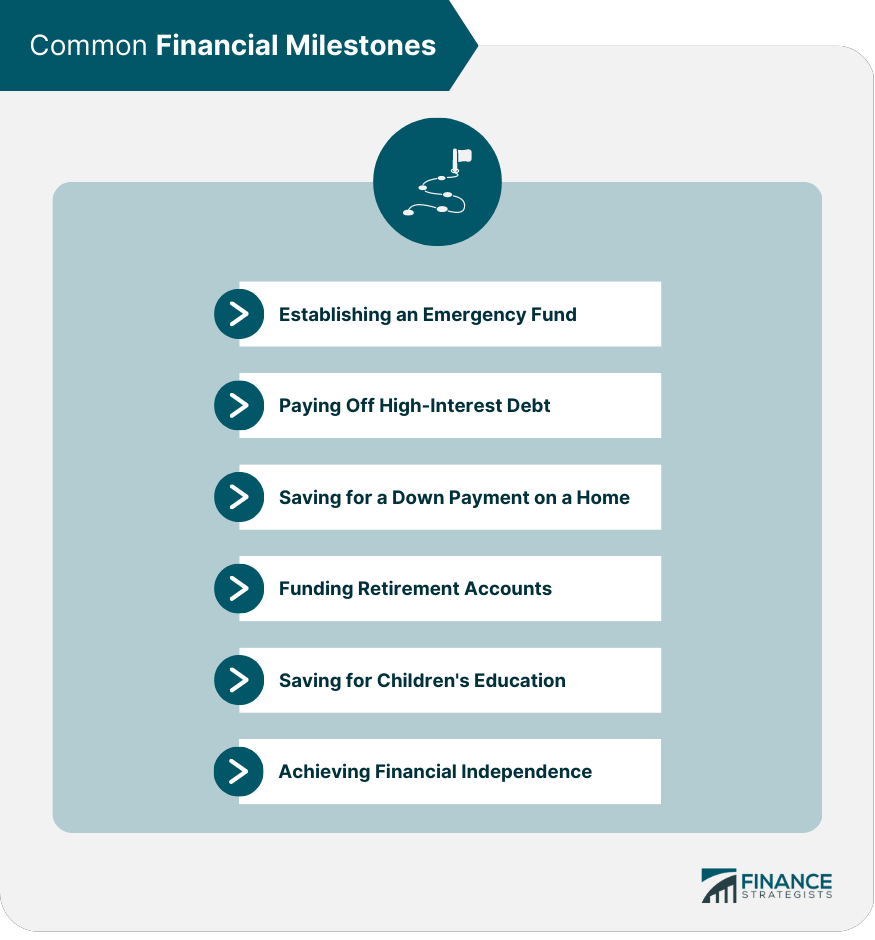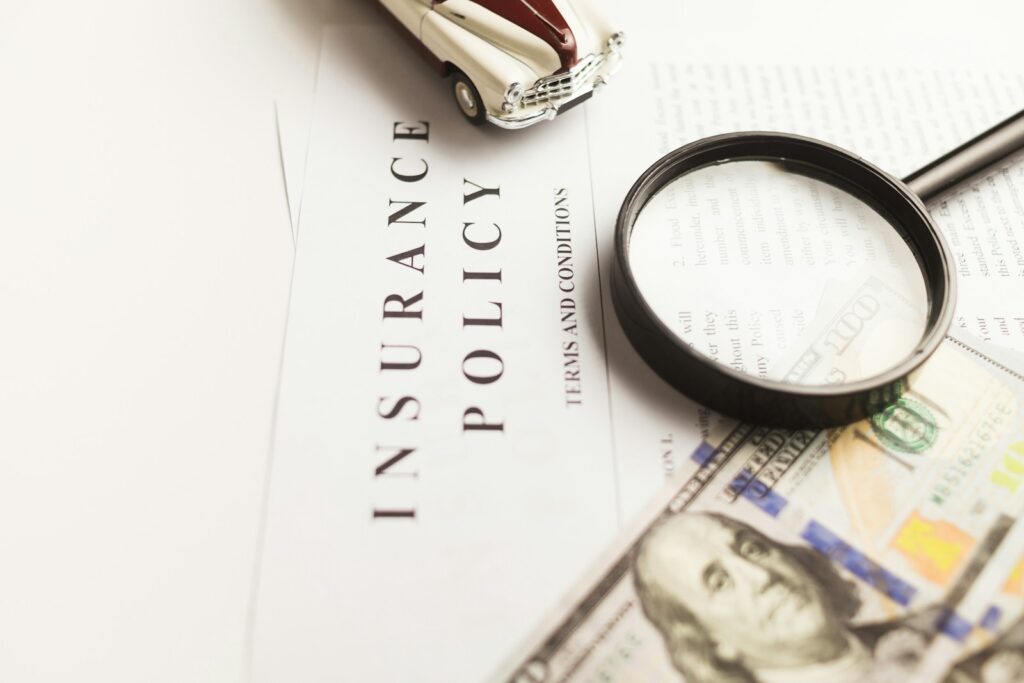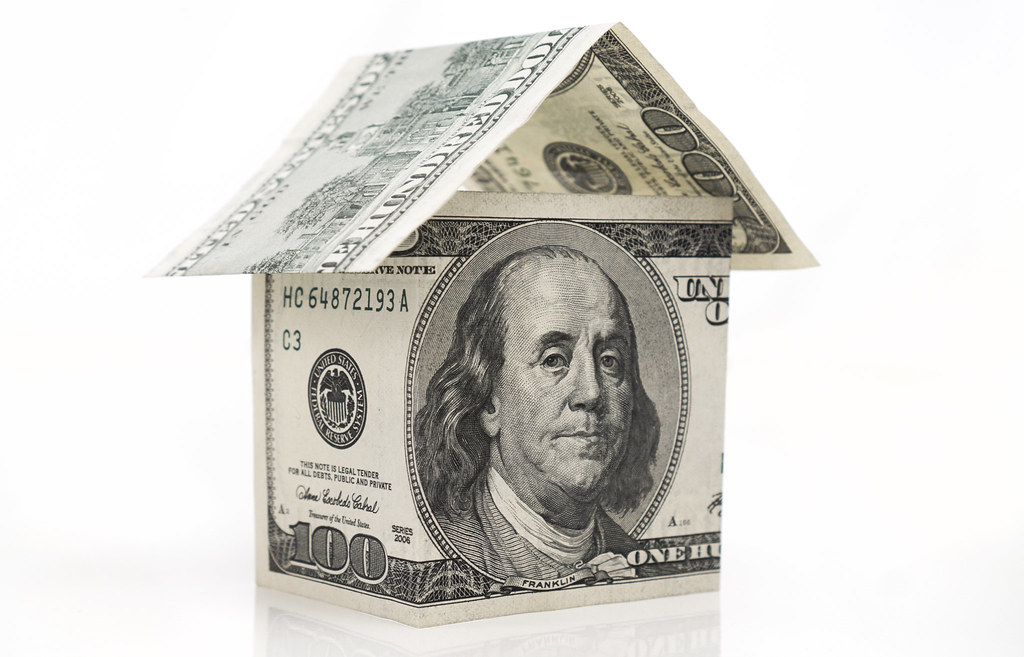Homeownership is a significant milestone, a testament to hard work and long-term planning. Protecting that cherished investment with the right homeowner’s insurance is absolutely crucial for financial security. However, for many, navigating the intricate world of insurance can feel like deciphering a secret code, filled with jargon, endless options, and seemingly arbitrary price differences. Homeowners often stick with their current policy or opt for the first quote, unknowingly missing out on substantial savings and superior coverage.
The good news is that securing the best deal doesn’t require a finance degree or complex calculations. It boils down to understanding key principles and knowing precisely where to look for leverage within the market. We’ve delved deep into how industry experts and reputable publications evaluate insurers, uncovering core elements that truly matter for both robust protection and competitive pricing. Our focus isn’t just finding the cheapest policy; it’s identifying the *right* policy for your specific needs at the most competitive price, empowering you to make informed decisions for your financial well-being.
In this comprehensive guide, we’ll strip away the complexity and reveal simple, powerful, actionable secrets to significantly reduce your annual homeowner’s insurance premiums. Simultaneously, we’ll ensure you maintain or even enhance the robust protection for your most valuable asset. From deciphering insurer ratings to strategically leveraging every available discount, prepare to embark on a journey that will unlock a smarter, more efficient, and rewarding approach to managing your homeowner’s insurance.

1. **Understanding How Insurers are Rated: Decoding the Methodologies**Many reputable financial publications and consumer advocates invest considerable effort in rating insurance companies. Understanding their methodologies is a powerful secret to finding the best deal. These aren’t arbitrary scores; they’re based on detailed research designed to help you make informed choices. Knowing what criteria experts prioritize gives you an advantage in identifying truly excelling insurers.
U.S. News, for instance, researched 21 companies, surveyed 1,125 policyholders, and analyzed 10,482 product features. They weighted price data, combined with survey scores for value, at a significant 40%. Crucially, they also weighted claim handling at 25%, emphasizing that a policy’s true value emerges when you need to file a claim. If an insurer delays payouts or offers unsatisfactory settlements, initial savings quickly diminish.
Other expert ratings, like Forbes Advisor’s, stress rates (40%) and low complaints (20%). Forbes Advisor additionally allocates 20% to “availability of extended and/or guaranteed replacement cost coverage,” a vital feature when construction costs spike after a disaster. NerdWallet prioritizes “consumer experience (40%)” and “financial strength (30%).” These consistent themes—affordability, strong claims service, financial stability, and robust coverage—should be your guiding stars. Leverage these expert analyses to identify companies that consistently score high, ensuring reliability and competitive pricing.
2. **The Power of Comparison: Shopping Around for the Best Rates**If there’s one non-negotiable step to securing the best deal on homeowner’s insurance, it is consistently comparing quotes from multiple providers. This isn’t just a suggestion; it’s a fundamental strategy that financial experts universally recommend. Home insurance rates are incredibly individualized, influenced by a complex web of factors unique to your property and personal profile, leading to significant price disparities for identical coverage.
The market’s dynamic nature further necessitates comparison. Even in challenging environments like California, where some major insurers have stopped writing new policies, experts still advise proactive shopping. If your existing rates are set to increase, “that’s a good time to shop around to see if you can find cheaper coverage from a different company.” This constant flux means that relying on a single quote or passively renewing your policy can often mean leaving money on the table.
Fortunately, comparing rates is easier than ever. Many reputable companies offer online quote tools, providing quick estimates. While some specialized insurers might require direct agent contact, the effort is well worth it. Gather your home’s details and desired coverage limits, then dedicate some focused time to inputting data or speaking with agents. This small investment can yield hundreds, if not thousands, of dollars in annual savings, ensuring you find the best value—adequate coverage from a stable company at a competitive price.
Read more about: The Ultimate Automotive Showdown: Hybrid, Electric, and Gas Cars Face-Off on Costs, Range, and Practicality – Who Wins Your Drive?

3. **Boosting Your Financial Profile: The Role of Your Credit Score**Your credit score, or more specifically, a “credit-based insurance score” derived from your financial history, plays a surprisingly significant role in determining your homeowner’s insurance premiums. Insurers use this score to assess risk, often correlating responsible financial management with a lower likelihood of filing claims. A strong credit profile can therefore directly translate into more favorable insurance rates.
The impact of credit scores is clearly illustrated in how industry experts analyze rates. U.S. News, in partnership with Quadrant Information Services, collected premium data for applicant profiles featuring a “720 FICO credit score,” and also gathered information for a “620 FICO score,” even if not used in their final rating. This systematic data collection confirms that credit standing is a distinct factor insurers consider. NerdWallet explicitly notes this, stating that “In states where credit is a rating factor, we changed the credit tier from ‘good’ to ‘poor,’ as reported to the insurer, to see rates for homeowners with poor credit.” This shows a clear link between credit health and cost.
Proactively improving your credit score—through consistent on-time payments, low credit utilization, and correcting report errors—can lead to tangible, long-term savings on your insurance. As your credit improves, make sure to ask your current insurer for a re-evaluation or leverage your enhanced financial health when shopping for new quotes. This empowering step not only saves money on insurance but also strengthens your overall financial well-being.

4. **Strategic Deductibles: Finding Your Sweet Spot for Savings**Your deductible, the amount you agree to pay out-of-pocket before your insurance coverage activates, is a direct lever for influencing your homeowner’s insurance premiums. The principle is simple: generally, a higher deductible results in a lower annual premium, and vice-versa. By accepting more of the initial financial risk yourself for smaller claims, you reduce the insurer’s potential payout burden, and that reduced risk is reflected in a more favorable premium.
Industry analyses frequently demonstrate this relationship through various deductible options. For example, U.S. News, in their premium collection profiles, explicitly utilized both “$1000” and “$2500” deductibles. Forbes Advisor based their calculations on a “$500 deductible,” while Insurance.com and NerdWallet consistently employed a “$1,000 deductible” in their respective methodologies. These figures highlight common choices, but the key is finding what works for you.
Before selecting a deductible, it’s crucial to honestly assess your financial situation and emergency savings. Could you comfortably cover a $500, $1,000, $2,500, or even a higher amount, without significant financial strain, if you needed to file a claim today? The goal is to strike an optimal balance: save on premiums with a higher deductible, but ensure you can still manage the out-of-pocket cost without creating a new financial hardship during an already stressful claims process.
Read more about: The Untapped Car Insurance Loophole That Could Slash Your Premiums by Up to 45 Percent This Year

5. **Tailoring Your Coverage: Optimizing Dwelling and Liability Limits**A core secret to getting a fair deal on homeowner’s insurance is meticulously tailoring your dwelling and liability coverage limits to your specific needs, avoiding both under-insuring and over-insuring. Dwelling coverage protects your home’s physical structure, and liability coverage shields your finances if someone is injured on your property. Getting these limits right is paramount for both robust protection and cost efficiency.
Experts frequently analyze rates based on various dwelling coverage amounts to show how costs scale. U.S. News considered dwelling coverage ranging “from $300,000 to $800,000,” and Forbes Advisor from “$200,000, $350,000, $500,000 and $750,000.” Crucially, your dwelling coverage should reflect the estimated cost to rebuild your home, not its market value. Over-insuring wastes money, while under-insuring leaves you vulnerable after a major loss.
Equally important are liability limits. U.S. News included liability coverage “from $100,000 to $300,000,” and Forbes Advisor used “$100,000 liability coverage.” While lenders have minimums, consider your overall net worth and potential legal exposure. A $100,000 limit might be quickly exhausted in a serious injury claim, risking your personal assets. Remember other core coverages like “personal property coverage at 50% of dwelling coverage” and “loss of use coverage at 20% of dwelling coverage,” as outlined in U.S. News profiles. These percentages are starting points but can be adjusted to match your actual belongings and potential displacement expenses, ensuring you pay for precisely what you need.

6. **Location, Location, Location: Understanding Geographic Rate Factors**Your geographic location is a monumental factor influencing your homeowner’s insurance premiums. This isn’t anecdotal; it’s a fundamental truth backed by extensive insurance rate data across the country. Your specific address, down to the ZIP code, city, and county, profoundly impacts your rates because insurers use granular data to assess local risks, which then directly translates into your individualized policy cost.
The data for California vividly illustrates this. We see explicit information on “California homeowners insurance rates by ZIP code” and “California homeowners insurance rates by county.” While the average annual cost in California is $1,405, certain ZIP codes like 92325 face an average of $2,084, contrasting sharply with 95051 at $990 a year. This significant difference within the same state highlights the hyper-local nature of rate calculations.
Key geographic factors driving these variations include the prevalence of natural disasters such as wildfires, floods, and earthquakes, alongside local crime rates and proximity to essential services. The California Insurance Department confirms that “many insurers also apply a surcharge to the premium for homes located in areas with a comparably higher risk for wildfires.” This clearly shows how environmental factors directly impact both your insurability and premium. Investigate average rates for your specific location; awareness empowers you to understand quotes better and make informed decisions.
Read more about: Navigating the Rough Road: The 13 Critical Reasons Why Used Car Dealerships Fail and How to Thrive
7. **Unlocking Savings: A Deep Dive into Available Discounts**One of the most accessible yet often overlooked secrets to securing a better deal on homeowner’s insurance is diligently identifying and applying for every eligible discount. Insurance companies actively offer a wide array of premium reductions designed to reward homeowners for proactive safety measures, demonstrating loyalty, and even for their payment preferences. These are readily available opportunities to significantly lower your annual costs without compromising coverage quality.
Many discounts center on enhancing your home’s safety and security. Installing basic features like “smoke detectors, a burglar alarm or dead-bolt locks” can yield “1% to 3%” savings. Upgrading to a more comprehensive system, such as “a sprinkler system and a fire and burglar alarm,” can increase that reduction to “3% to 7%.” These improvements not only save money but also make your home safer, a win-win that insurers are eager to reward.
Beyond security, loyalty and payment methods also generate savings. “Loyalty discounts” can be substantial, averaging “6% on average after three to five years and 9% for ten years or more,” showing that sticking with a good insurer pays off. “Paying your 6-month or 12-month premium in full” can save you “7% on average.” Some insurers, like Mercury, offer unique discounts such as “5% savings for using green building materials,” or “up to 10% on wind and water coverage by making updates to an older home.” Always ask your agent about every discount you might qualify for. While discounts make up a smaller portion of overall rating methodologies, their cumulative effect can be quite powerful, making a tangible difference in your total costs.
Having mastered the foundational strategies for securing a great homeowner’s insurance deal, it’s time to elevate your game with advanced tactics and specific policy considerations. The journey to truly optimized coverage and maximum savings extends beyond the basics, requiring a keen eye for detail and an understanding of how to leverage every facet of the insurance ecosystem. These next eight insights will empower you to fine-tune your policy, enhance your protection, and ensure you’re never overpaying for peace of mind. Let’s dive into the specifics that can make a substantial difference in your annual premiums and overall financial security.
Read more about: Unlock Peace of Mind: Simple Secrets to Getting the Best Deal on Travel Insurance for Seniors

8. **The Power of the Package: Bundling Your Policies**One of the most straightforward and effective ways to reduce your insurance costs is to bundle your homeowner’s insurance with other policies, most commonly auto insurance, from the same provider. This isn’t just about convenience; insurers often provide substantial discounts for clients who consolidate multiple policies with them, recognizing the increased loyalty and overall business value.
The savings from bundling can be quite impressive, sometimes offering reductions of “up to 16%” on your combined premiums. This significant percentage can translate into hundreds of dollars annually, making it a compelling strategy for any homeowner looking to cut costs. The administrative simplicity of having one insurer for multiple policies is an added bonus, streamlining your insurance management.
While the prospect of significant savings is appealing, it’s crucial to still compare bundled quotes against separate policies from different carriers. Occasionally, unbundled policies might offer a better overall price, especially if one insurer specializes in a particular type of coverage or if your risk profile is unusually favorable for one line of business. Always get multiple quotes – both bundled and unbundled – to ensure you’re truly getting the best deal for your unique situation.

9. **Beyond Basic Protection: Investing in Disaster Mitigation**In an era where natural disasters are an increasingly pressing concern, particularly in states like California, proactive disaster mitigation efforts can significantly impact your insurability and premium costs. Beyond the immediate safety benefits, taking steps to fortify your home against common local hazards signals reduced risk to insurers, often translating into valuable discounts and improved access to coverage.
For example, specific actions like “disaster-proofing your home with fire-resistant materials” can yield savings of “7%”. In wildfire-prone regions, these efforts are not just about discounts; they can be the difference between securing coverage and being deemed too high-risk. The California Insurance Department confirms that “many insurers also apply a surcharge to the premium for homes located in areas with a comparably higher risk for wildfires,” reinforcing the importance of mitigation.
Some specialized insurers, like Chubb, even offer “wildfire defense services,” sending a “risk consultant to your home to give you recommendations on how to protect your property from wildfires” and dispatching “certified fire professionals to your home to help minimize the damage” during an active event. These proactive measures not only protect your most valuable asset but also actively contribute to lowering your long-term insurance expenses, making them a wise investment.
Read more about: Beyond Survival: 12 Critical Lessons on Resilience from Those Who Conquered Crisis

10. **Custom-Fit Coverage: Navigating Optional Add-Ons**While core coverages are standard, the true strength of your homeowner’s policy often lies in its optional add-ons. These tailored protections address specific risks that standard policies typically exclude, ensuring comprehensive security for your unique property and circumstances. Understanding and selectively adding these endorsements is a smart way to optimize your policy without overspending.
Industry experts acknowledge the value of these specialized protections. U.S. News, for instance, dedicates “4%” of its coverage rating to “other optional coverages,” signaling their importance in a well-rounded policy. Forbes Advisor heavily weights the “availability of extended and/or guaranteed replacement cost coverage” at “20%” of its score, recognizing its crucial role when rebuilding costs surge after a major disaster. This type of coverage ensures you’re not left with a gap between your policy limit and the actual cost of reconstruction.
Beyond these, consider specific endorsements that address localized risks or unique property features. In California, for example, Mercury offers “earthquake coverage through the California Earthquake Authority (CEA)” and “Hidden water leak coverage,” which pays for damage from leaks concealed within walls or ceilings. Other valuable options can include “Green home coverage,” which offers “up to 10% extra for you to replace damaged materials, like windows or appliances, with environmentally friendly alternatives,” and “Matching siding or roofing coverage” to ensure aesthetic consistency after partial damage. Thoughtfully reviewing and selecting these add-ons ensures your policy is perfectly aligned with your property’s needs.

11. **The Human Element: Prioritizing Customer Service and Claims Handling**While premiums are often the primary focus, the true test of an insurance policy comes during a claim. Stellar customer service and efficient claims handling are non-negotiable for a positive insurance experience. Ignoring this aspect in pursuit of the lowest premium can lead to significant frustration and financial stress when you need your policy most.
Expert methodologies consistently emphasize these factors. U.S. News allocates a substantial “25%” of its rating to “Claim Handling,” comprising both survey scores for satisfaction and NAIC complaint information. NerdWallet also gives a weighty “40%” to “Consumer experience,” encompassing the entire interaction from purchasing to claims. Forbes Advisor dedicates “20%” of its score to “Complaints” from state insurance departments, explicitly noting that “Most home insurance complaints center on claims, including delays, unsatisfactory settlements and denials.”
Therefore, when evaluating insurers, delve into their reputation for service. Companies like AAA and USAA are frequently lauded for their “highly rated customer service” and “top-notch customer service” respectively. Conversely, be wary of insurers with a history of claim delays, as noted with Mercury, which has received “about twice as many” complaints as typical companies, primarily due to “delays after wildfire claims.” A responsive and supportive insurer can make all the difference in a crisis.

12. **Leveraging Technology: The Convenience of Digital Tools**In our increasingly digital world, the accessibility and functionality of an insurer’s online tools and mobile applications can significantly enhance your experience. These digital platforms offer unparalleled convenience for managing your policy, submitting claims, and accessing information, streamlining tasks that once required phone calls or paperwork.
Recognizing this shift, expert ratings now incorporate digital experience as a key evaluation criterion. Forbes Advisor, for example, dedicates “10%” of its score to “Digital experience,” assessing features such as the presence of a mobile app, the ability to “submit claims online,” “pay online,” a “useful website search function,” and the availability of a “live chat.” These features indicate an insurer’s commitment to modern, customer-centric service.
While many companies offer robust digital platforms, it’s worth noting that some, particularly those specializing in certain niches like high-value homes, may not offer the same level of online quoting or self-service options. For instance, both Mercury and Chubb explicitly state that you “can’t compare home insurance quotes online” or “doesn’t offer online quotes,” requiring direct agent contact. Weigh the importance of digital convenience against other factors when making your choice, ensuring the insurer’s technological offerings align with your preferences.
Read more about: Beyond the Showroom: Why Inventory Woes and Digital Demands Are Reshaping Automotive Dealerships Today

13. **Four-Legged Friends and Your Policy: Understanding Pet Policies**For many homeowners, pets are cherished family members, but it’s important to recognize that they can subtly influence your homeowner’s insurance. Specifically, certain dog breeds, or a history of bites from any dog, can impact your eligibility for coverage or even the cost of your premiums. This is a critical, often overlooked, aspect of your policy.
Forbes Advisor highlights this by dedicating “10%” of its rating to “Banned dog lists.” They clarify that while “any homeowners insurance company could potentially ban any dog with a biting history,” some insurers maintain lists of “specific breeds” that they will not cover or for which they will charge higher rates. This policy varies by company and can even be subject to state regulations, meaning a banned breed in one state might be insurable in another.
Before you finalize your policy, or if you’re considering adding a new furry friend to your family, it’s wise to openly discuss your pets with prospective insurers. Inquiring about their specific “banned dog lists” or any surcharges related to pet ownership can prevent unwelcome surprises down the line. Being transparent ensures you have adequate liability coverage for any potential incidents involving your pets, protecting both your finances and your peace of mind.

14. **The Ripe Moment: Knowing When to Re-evaluate Your Policy**Homeowner’s insurance isn’t a ‘set it and forget it’ product; it requires periodic review to ensure it continues to meet your evolving needs and offers the best possible value. Being proactive about re-evaluating your policy can unlock new savings and guarantee your coverage remains robust. Missing these key moments means potentially leaving money on the table or, worse, becoming underinsured.
One of the most opportune times to re-evaluate is when your “existing rates are set to increase.” Experts strongly advise that “that’s a good time to shop around to see if you can find cheaper coverage from a different company.” You should be notified of any rate increases upon your plan’s renewal, providing a perfect window to explore other options and leverage comparison shopping once again.
Significant life changes and home improvements also warrant a policy review. If you’ve improved your “credit score,” make sure to “ask your current insurer for a re-evaluation or leverage your enhanced financial health when shopping for new quotes,” as improved credit can directly lower premiums. Major renovations, installing new safety features, or even significant changes in your personal property value can all impact your coverage needs and potential discounts, making it essential to keep your insurer informed and reassess your policy terms.

15. **Beyond the Mainstream: Exploring Specialized Insurers**While major national carriers dominate the insurance landscape, specialized insurers often offer unique advantages for specific homeowner profiles. These niche providers can deliver highly tailored coverage, competitive rates, or exceptional service that general insurers might not match. Knowing when and how to explore these specialized options is a secret to truly optimizing your insurance strategy.
Consider companies like USAA, which is renowned for its “top-notch customer service” and “affordable rates” but is exclusively available to “military members, veterans and their families.” If you or a family member qualify, exploring USAA could unlock significant benefits that are simply unavailable through standard channels. Their understanding of military life often translates to specialized protections and service.
Similarly, Chubb stands out as a premier choice for “high-value homes,” offering “coverage tailored to valuable homes” and “excellent customer service.” Chubb policies, such as their Masterpiece package, can include unique benefits like “cash settlement,” allowing a payout if you choose not to rebuild after total destruction, and “wildfire defense services.” However, they typically have “much higher prices” and require a “minimum amount of dwelling coverage,” making them suitable for a specific clientele. While these specialized insurers might require direct contact with an agent and might not offer online quotes, the tailored benefits and expertise can be well worth the effort for those who fit their specific criteria.
Mastering homeowner’s insurance is an ongoing journey, not a one-time event. By embracing these advanced tactics – from strategic bundling and disaster mitigation to leveraging digital tools and understanding niche providers – you empower yourself with the knowledge to consistently secure the best possible deal. Remember, your home is your most significant investment, and ensuring it’s protected by a comprehensive, cost-effective policy is a cornerstone of sound financial health. Stay vigilant, stay informed, and enjoy the peace of mind that comes with truly understanding your coverage.







